5 legends of Iceland's Mythology

The Icelandic legends
- Lagarfljotsormur, the Icelandic Loch Ness monster
- The Álfhól dollhouses
- Haifoss ogress
- Gullfoss and the gold chest
- The legend of Dimmuborgir
Lagarfljotsormur, the Icelandic Loch Ness monster
Lake Lagarfljot is located in the east of the country. It is actually a river flowing from the Vatnajokull glacier to the ocean. The area is quite isolated and the atmosphere around the lake is mysterious. This is enough to tell local legends for a few years.
People who live in the east of the country or those who took a flight to Reykjavik can tell you the story of the monster inhabiting its dark waters. Indeed, like in Scotland, Iceland has its own Loch Ness monster.
He calls himself Lagarfljotsormur (be careful, difficult pronunciation!). The name of this beast means "the Lagarjot worm". This monster lives in the east of the country and has been filmed more than once by locals. We can see on videos a strange and moving form in the waters of the lake.
The legend says that a young girl, after her mom gave her a gold ring, asked how whe could make the most of it. Her mom said that according to the myths, if you put a worm on gold, the gold will grow. So this young girl locked a worm in a chest with her ring, hoping that this way she would get more gold. But the worm grew instead, bigger and bigger. When the girl realized it, she became so scared that she threw the chest in the lake.
Since then, the beast that’s looking like a large sea snake has been fueling rumors about its existence, making occasional appearances in videos on the internet.
Authenticated images for some, unique legends for others, no one has ever lifted the veil on this mystery.
Video clip of a suspected sighting of Lagarfljótsormurinn
The Álfhól dollhouses
Wherever you are in Iceland, whether in a populated city or in the heart of an unusual nature with supernatural looks, you will probably see some álfhól.
These are small wooden houses that people build for the elves who live there. You can even see very small churches, created for the purpose of converting the elves to Christianity. These elven mansions range from the simplest to the most elaborate.
Don't forget to take lots of pictures of your friends at home, it's unlikely they’ve already have seen this kind of little house, no bigger than our legs.
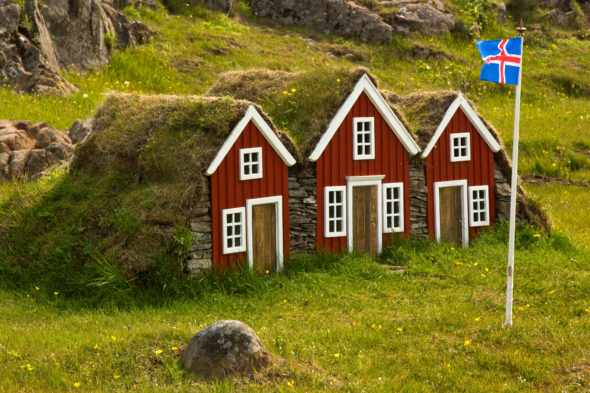
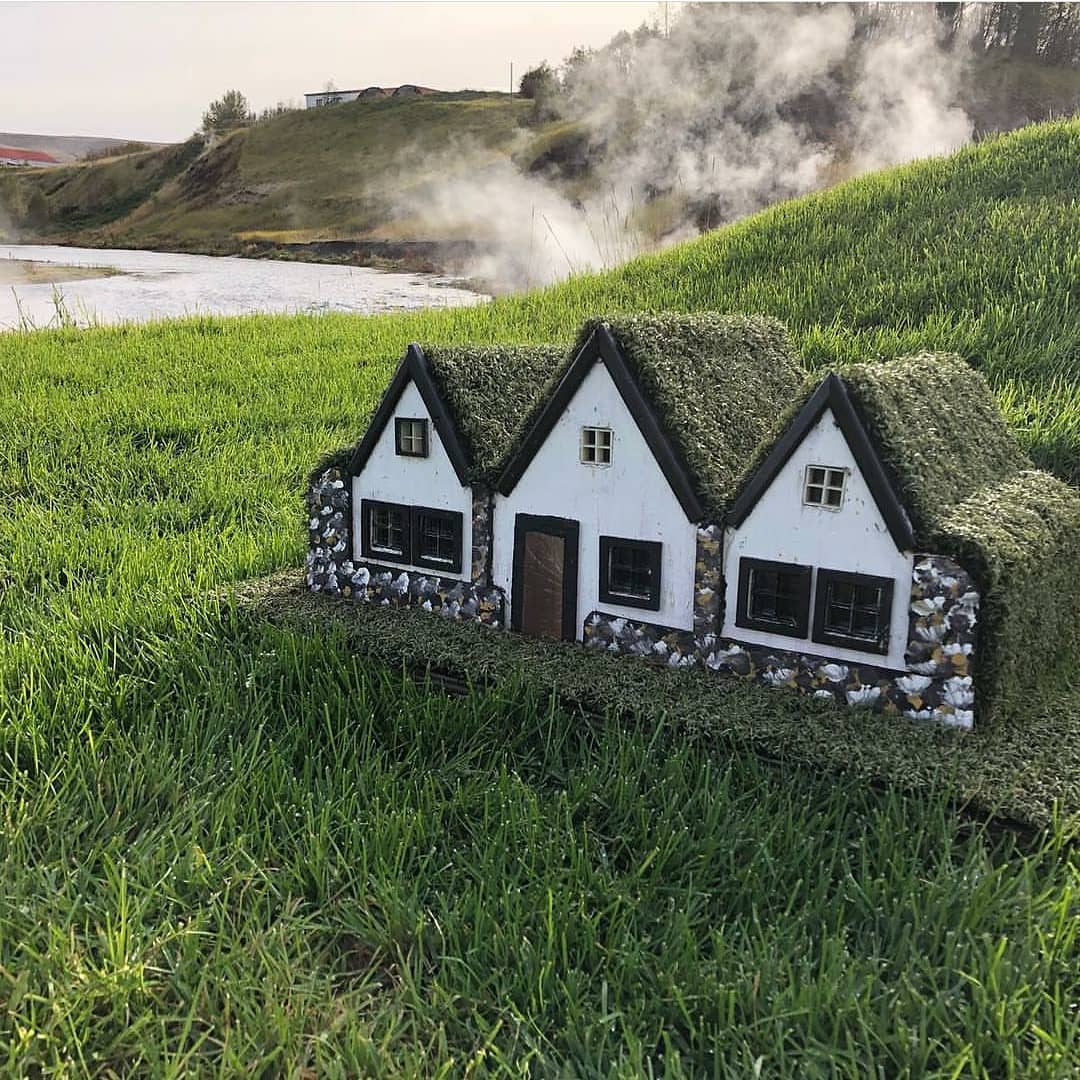
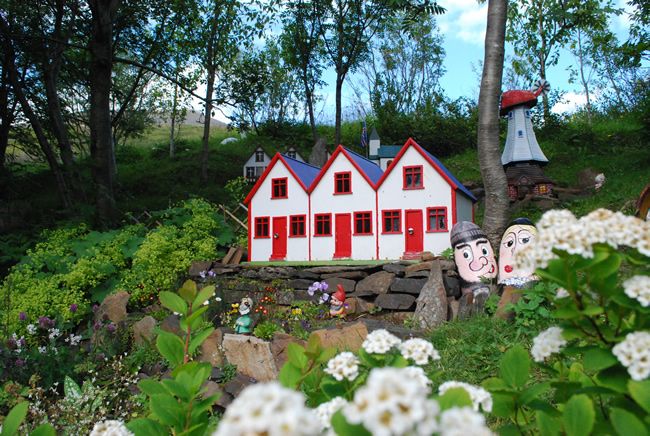
Haifoss ogress
The Haifoss waterfall is located in the south of Iceland. We actually made a full article about waterfall in Iceland, here it is : The 10 most famous waterfalls in Iceland.
Anyway, let’s go back to our story!
It was said that it was the home of an ogress who was fishing for trout and threatening those who approach too close. A group of travelers was camping near the river when one of the group's teenagers threw a stone into it.
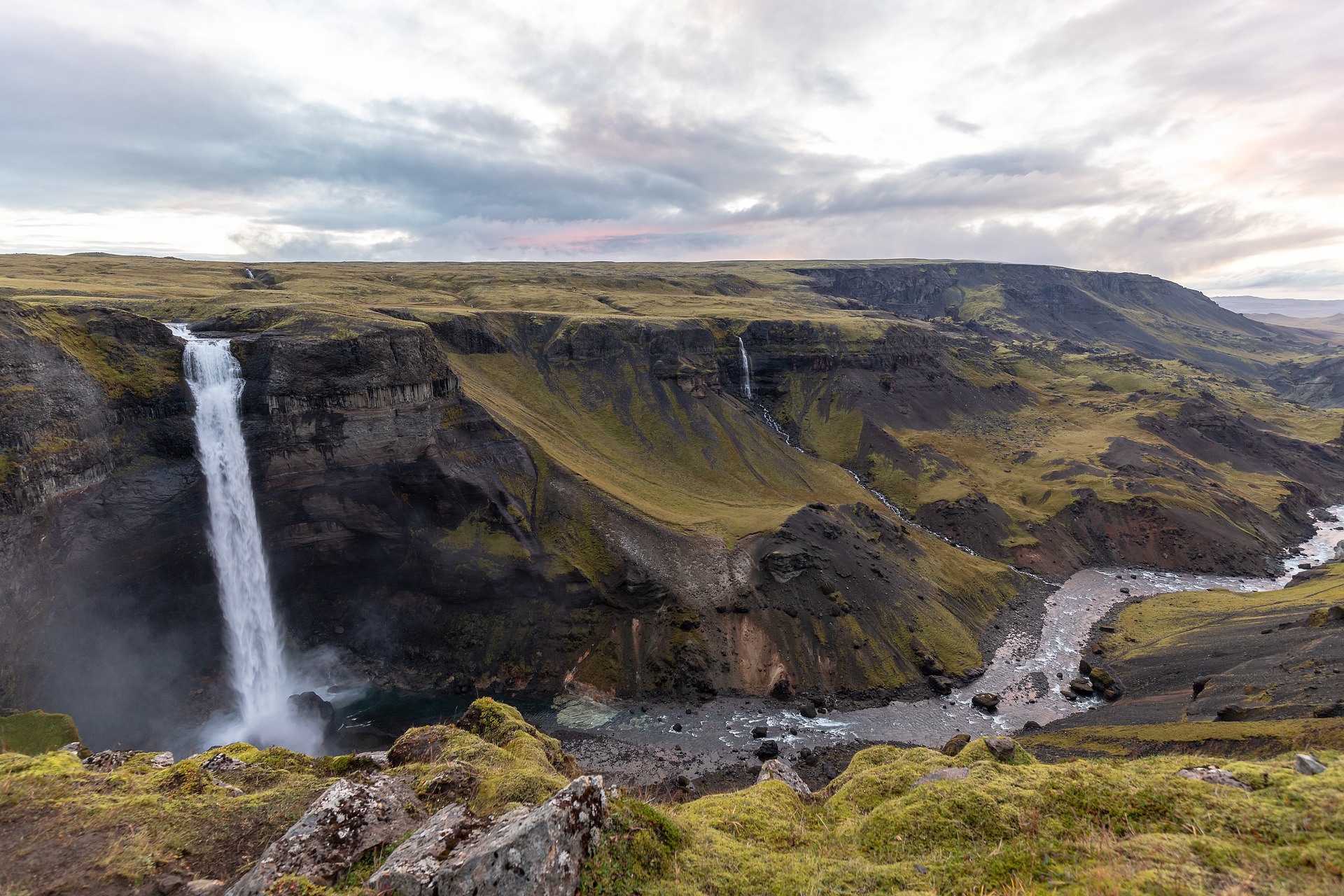 Photo: Haifoss is one of the highest waterfalls in Iceland
Photo: Haifoss is one of the highest waterfalls in Iceland
This was seen by the ogress, who was offended at the act on what she considered her property. So she waited until nightfall when it would be safe for her to emerge.
She snuck into the boy's tent, rushed over, and started dragging him by the feet. The boy's friends woke up, grabbed his arms, and started a bitter struggle to save his life. The boy survived but was terribly injured. It should be noted, however, that ogres and ogresses are less widespread than trolls in Icelandic folklore.
Gullfoss and the gold chest
The fall of Gullfoss is located in the Golden Circle near Reykjavik. At the beginning of the last century, Gullfoss was at the center of many controversies concerning foreign investors and their desire to profit from the Icelandic nature.
In 1907, an English businessman, Howell, sought to use the energy of the waterfall and maintained the ambition to use it to power a hydroelectric plant. At the time, Gullfoss belonged to a farmer named Tómas Tómasson.
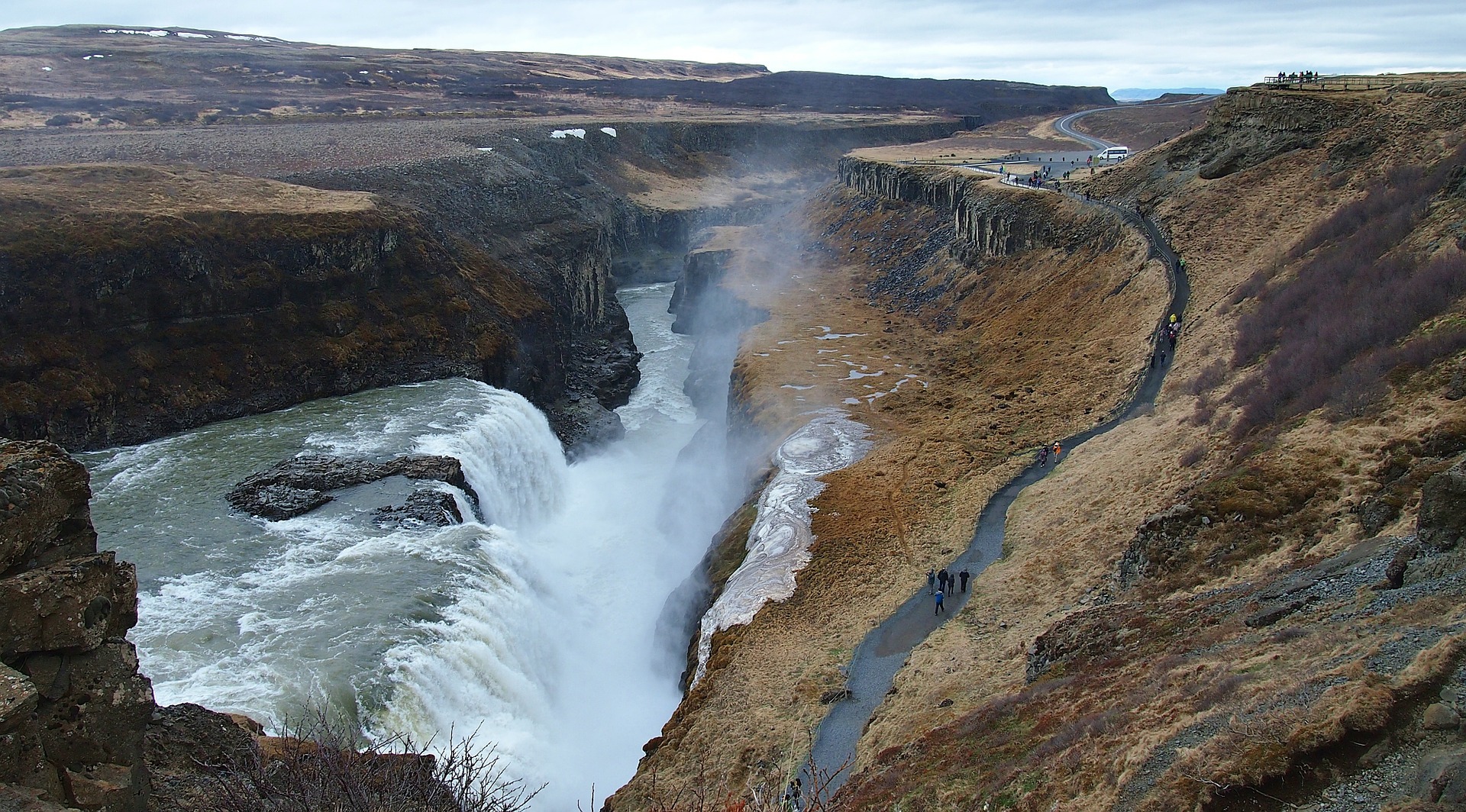 Photo: Gulffoss is a part of the Golden Circle in Iceland
Photo: Gulffoss is a part of the Golden Circle in Iceland
Tómas declined Howell's offer to acquire the land, saying, "I will not sell my friend!"
Gulfoss means golden falls in Icelandic. (Gull: gold and Foss: waterfalls). And three reasons could have given it this name.
Indeed, some assume that this name is linked to the reflections of the sun on frozen water in winter creating superb reflections.
Others assume that this is related to the rainbows that decorate the sky of the waterfall in sunny weather.
Others say that a wealthy farmer who did not want to give his fortune to anyone in gold preferred to throw it into the waterfall before his death. The treasure would still be at the bottom of the water...
Obviously, our favorite at Kuku Campers is the third option, and you, do you think you can find this treasure? By the way, waterfalls cannot be missed in Iceland, check our article about what you must do during your trip!
The legend of Dimmuborgir
2,300 years ago, a volcanic eruption hit the region really hard. The lava flowed into a 12-kilometer-long crack. A lava lake was created and then solidified. Water vapors escaped from the ground and went up into the lake. This is where these amazing lava column sculptures come from.
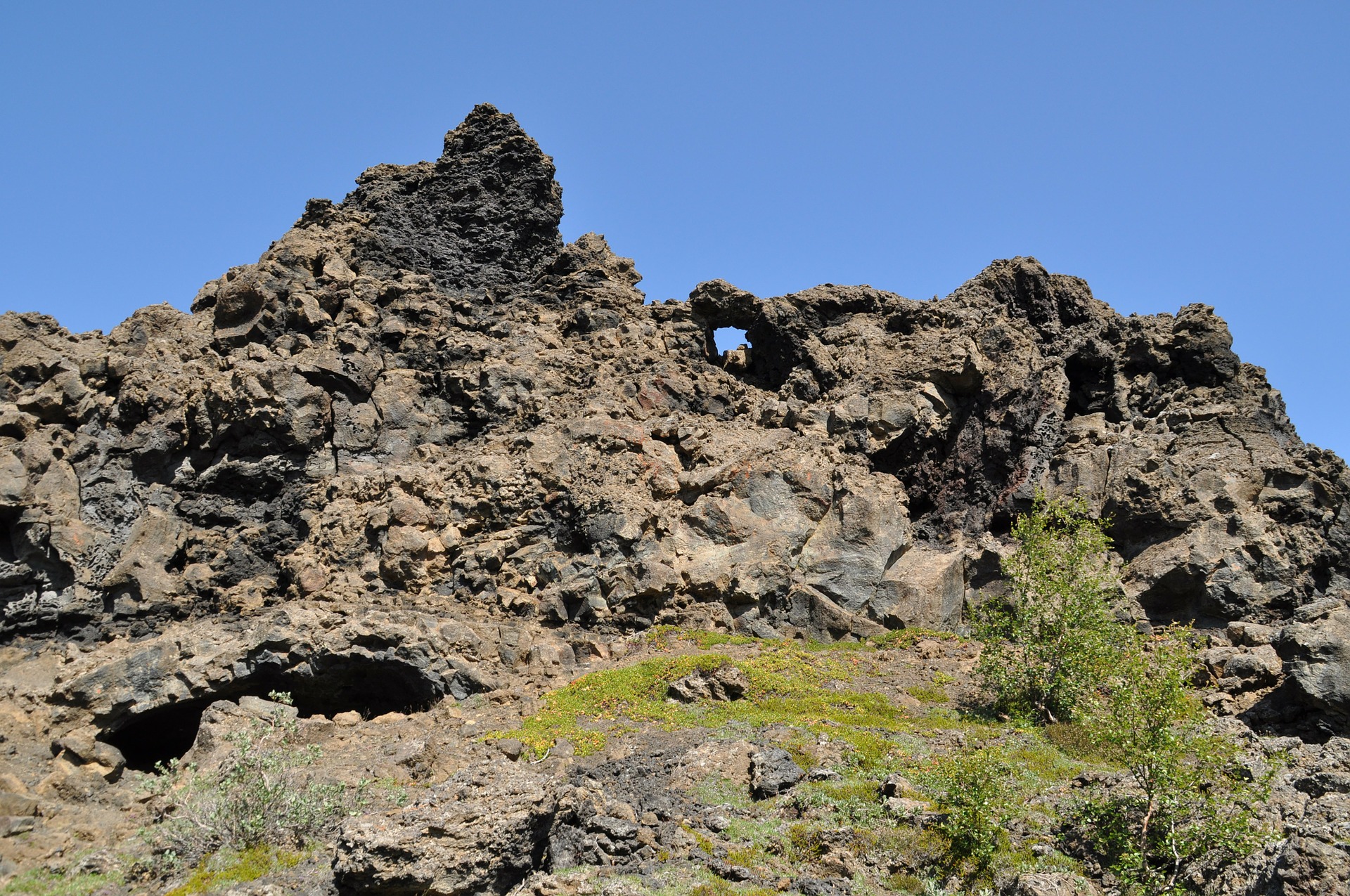 Photo: Dimmuborgir rock formations
Photo: Dimmuborgir rock formations
This famous Icelandic volcanic formation is located in the region of Lake Myvatn. In some lava chambers, it is possible to fit more than one person, explaining why it was named as the dark castle (the Icelandic meaning for Dimmuborgir).
Imagination doesn't stop there. Indeed, Nordic legends describe the place as the gateway to hell. This is what inspires this chaotic decor made of cones, chimneys, and holes.
It would also be around the corner that a giant named Gryla would have lived here with her third husband Leppaluoi, both of whom are known to kidnap children who had not been wise every Christmas.
For the record, Dimmuborgir is also a death metal band from Norway.
According to a 2006 survey, more than 55% of the island's people believe in the existence of elves, dwarfs, and spirits in Iceland. This belief is so well established that it often happens that certain roads are deviated on the advice of mediums, in order to bypass areas inhabited by these mystical creatures.
